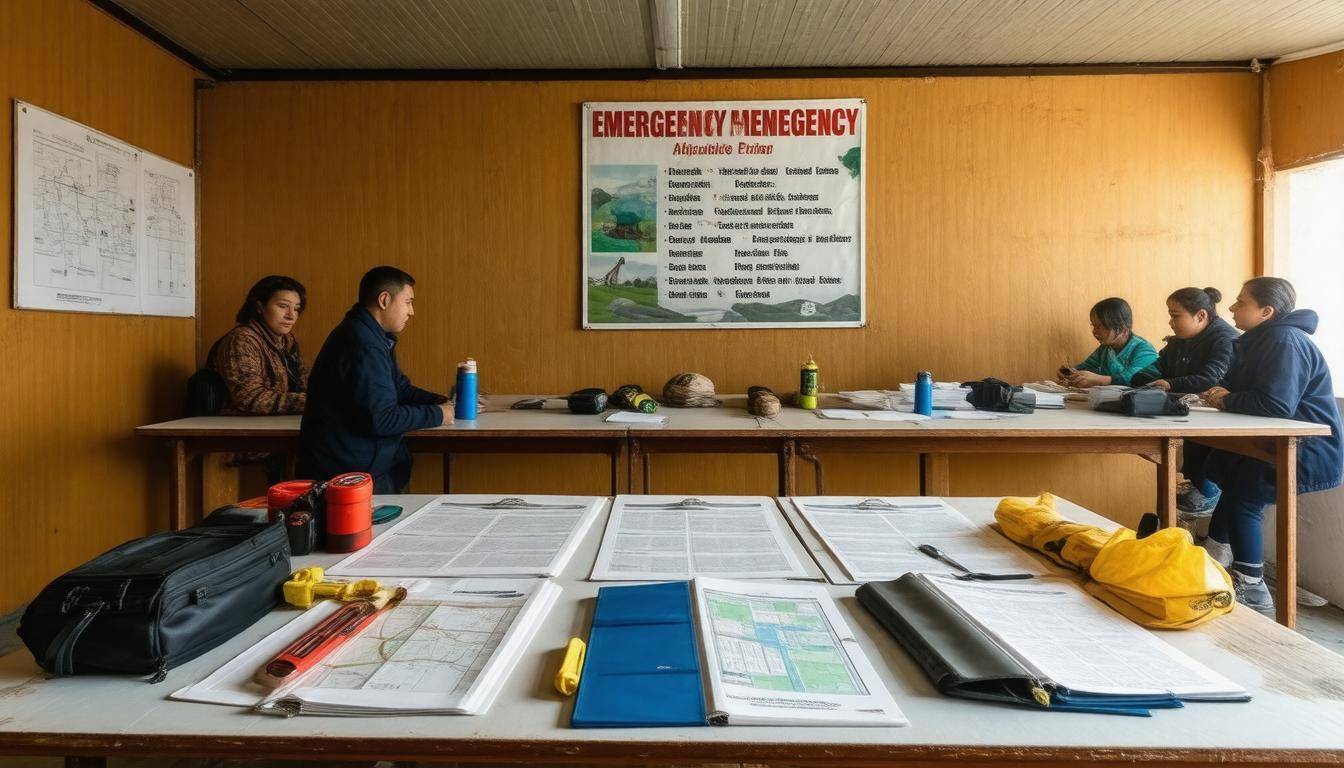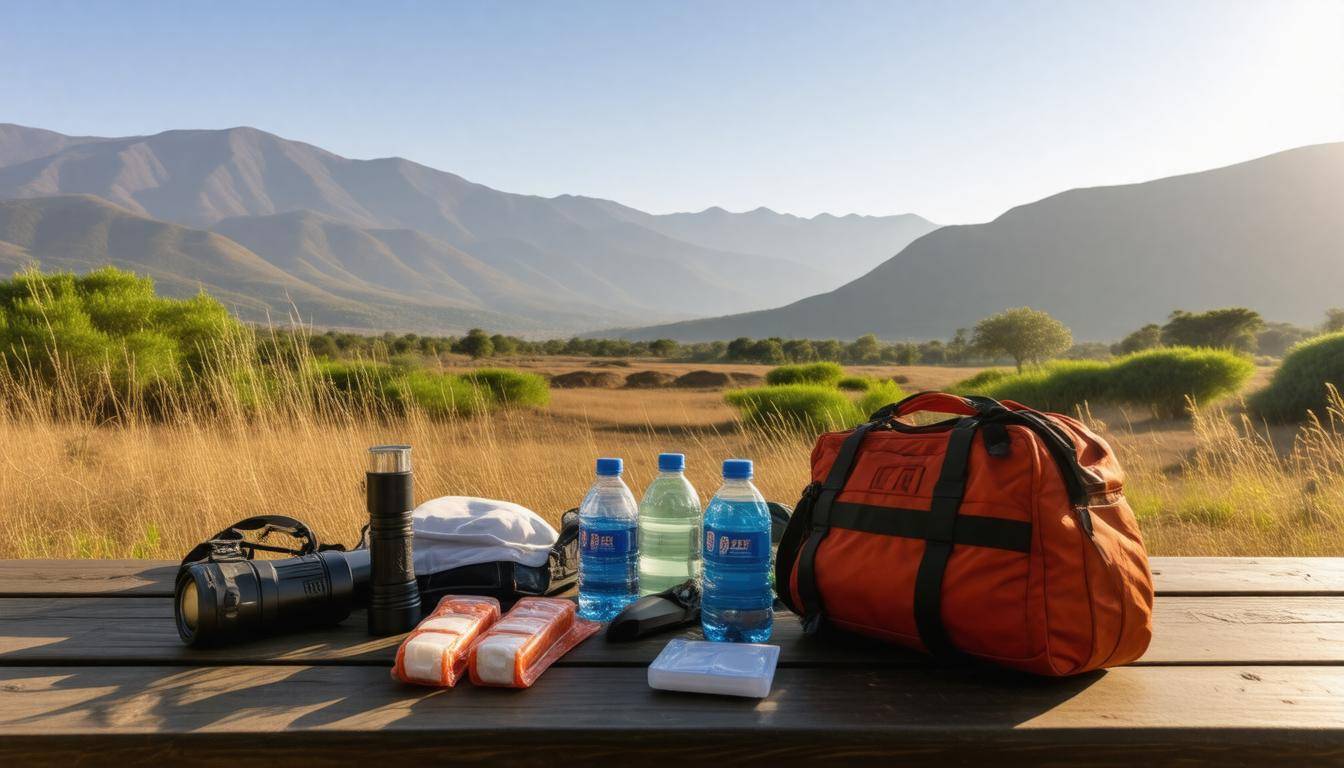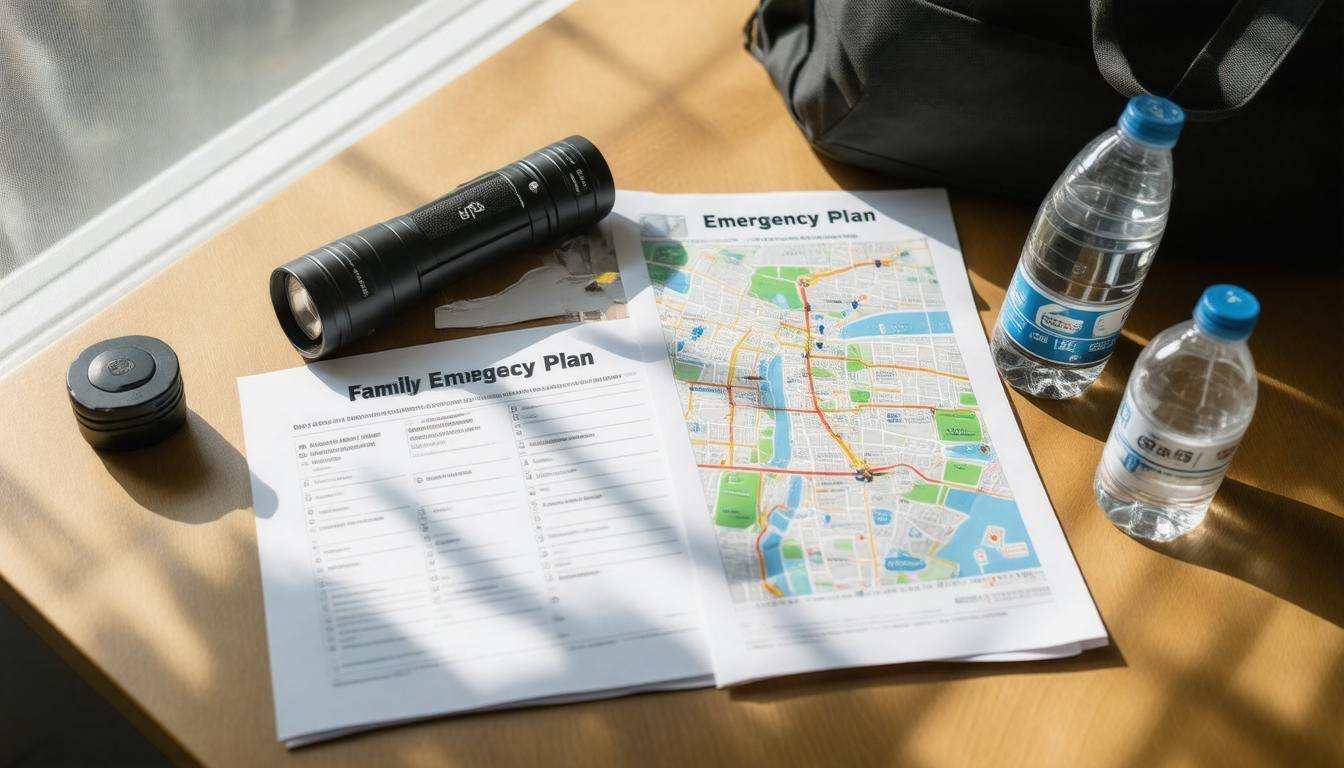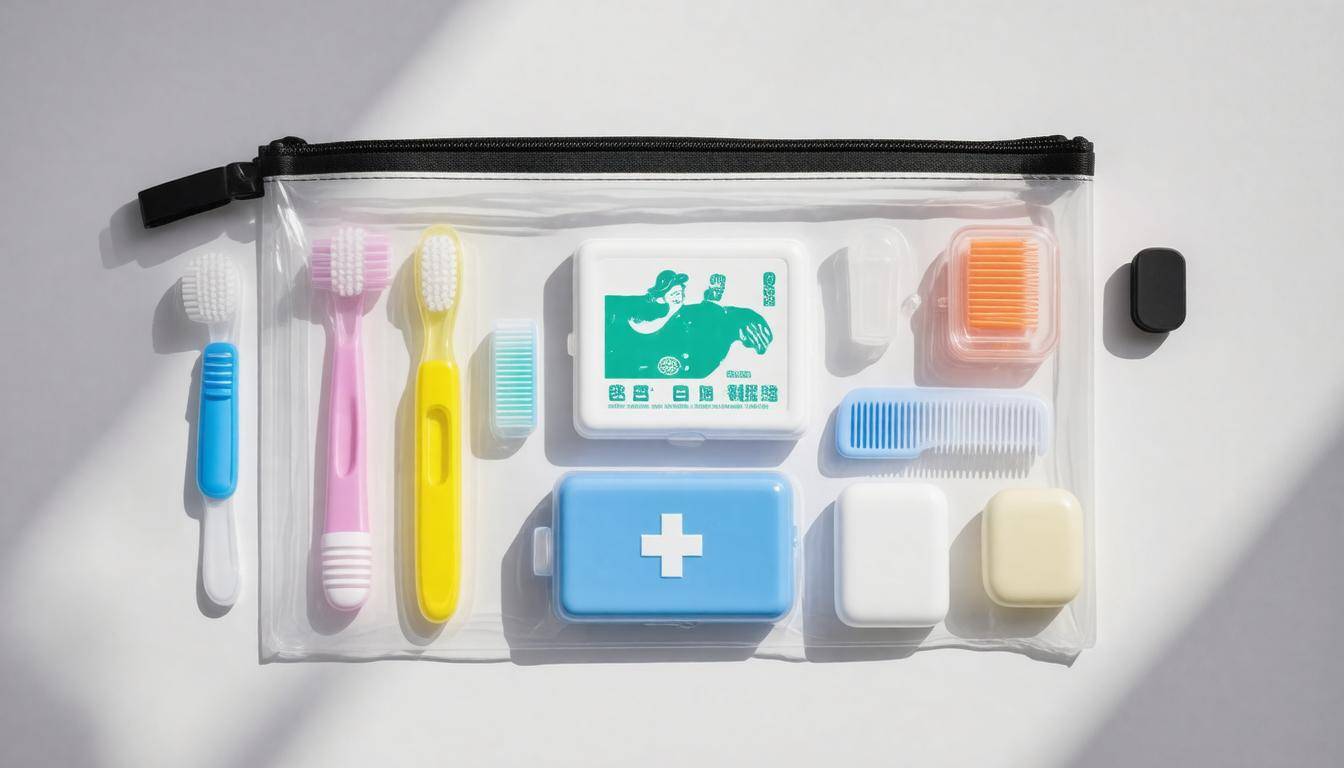Living in Peru comes with its own breathtaking beauty and adventure, but it also brings unique challenges—especially when it comes to natural disasters like earthquakes and landslides. Imagine the ground shaking beneath your feet or a hillside suddenly crumbling due to heavy rain. These situations aren’t just hypothetical; they’re realities for many communities. That’s why having a solid Emergency Plan is absolutely vital. This guide will take you through essential steps for preparedness, response, and recovery, so you’ll be ready if the unexpected happens. Whether you’re a local resident or just passing through, understanding how to protect yourself and those around you can make all the difference when disaster strikes. Let’s explore how we can come together as a community to face these challenges head-on.
A comprehensive Peru Earthquake & Landslide Emergency Plan should include hazard assessment maps that identify seismic and landslide risks specific to your area, clear evacuation routes, communication strategies for informing residents during an emergency, and designated meeting points for community members. Additionally, it is essential to conduct regular training drills and maintain collaboration with local authorities to ensure readiness for potential disasters.

Overview of the Emergency Plan
The emergency plan for earthquake and landslide preparedness in Peru is a structured framework crafted to mitigate the risks associated with these natural disasters. Its design revolves around three crucial phases—Preparedness, Response, and Recovery—ensuring that communities are not just equipped but also resilient in the face of such dangers. Living in a region prone to seismic activity means that proactive measures aren’t just advisable; they’re essential for survival.
The Preparedness phase is foundational. It targets educating residents about the risks posed by earthquakes and landslides. Educational campaigns highlight tremor recognition and safe behaviors during seismic events—like “Drop, Cover, and Hold On.” Regular drills simulate real-life scenarios to ensure everyone knows what to do when disaster strikes. This phase also includes establishing clear communication channels. Local governments set up systems to circulate vital information quickly, ensuring citizens receive timely updates about impending threats.
Importantly, stockpiling essential supplies is another critical aspect of this phase. Items such as water, non-perishable food, first aid supplies, and even flashlights should be readily accessible. Communities often work together to create emergency supply kits, preparing themselves for the days following a disaster when immediate help may be delayed.
Transitioning from preparedness, we enter the Response phase, activated immediately after an earthquake or landslide occurs. During this life-threatening moment, focus shifts to executing evacuation procedures and mobilizing search and rescue operations. Local authorities coordinate with various emergency services to provide initial medical aid to those injured.
It’s crucial for residents to be aware that evacuation routes are predetermined and marked on maps distributed by local government offices. Such foresight not only saves lives but also prevents confusion during chaotic moments. This rapid response system minimizes chaos and ensures that survivors receive prompt medical attention, which can make all the difference.
Finally comes the Recovery phase. While it may seem urgent once immediate threats have subsided, recovery is a long-term commitment requiring substantial investment in rebuilding affected areas. Psychosocial support becomes integral; communities must assist one another emotionally as they navigate through grief and loss.
It’s important to note that recovery efforts encompass not merely physical reconstruction but also creating more resilient infrastructures capable of withstanding future seismic activities. Research shows that prioritizing mental health support yields positive results in community resilience—highlighting how intertwined our physical and emotional recoveries truly are.
This robust emergency plan reflects a collective commitment from individuals, communities, and governments to enhance safety standards against unpredictable disasters. Understanding these frameworks enables us to further analyze areas most at risk and identify vulnerable populations within them.
Risk Evaluation and Vulnerable Areas
Evaluating risk in Peru involves a close examination of both natural landscapes and human settlements, identifying which communities are most susceptible to devastation from earthquakes and landslides. This country, nestled along the Pacific Ring of Fire, faces numerous geological hazards due to its unique topography.
The Andes mountain range, towering dramatically over the coastal regions, not only presents breathtaking vistas but also creates an inherent vulnerability. The steep slopes and varied soil compositions make these areas particularly prone to landslides, especially during heavy rainfall.
Identifying High-Risk Areas
For instance, let’s consider Lima—an urban center that sits directly on fault lines known for seismic activity. It’s essential to acknowledge that this city experiences frequent tremors, making it a true earthquake hotspot. In contrast, Puno near Lake Titicaca represents another type of risk; during the rainy season, the loose soil and steep terrain can lead to catastrophic landslides.
Understanding the characteristics of vulnerable areas is key; often we see hillsides with loose earth conditions accompanied by poor drainage systems, exacerbating the effects of heavy rainfall.
To put things into perspective, approximately 70% of Peru’s population resides in high-risk zones. Risk assessment attempts to prioritize these densely populated areas effectively while considering economic activities that may heighten vulnerability—for example, mining operations in mountainous terrains often lead to increased instability.
Furthermore, taking into account both natural and human-induced factors is crucial for appropriate planning and response strategies. Communities at risk must prepare adequately for disasters that can strike without warning. This could mean establishing warning systems in regions where traditional channels of communication might falter or creating education programs to inform residents about evacuation routes.
With a clear understanding of vulnerabilities and risks, it becomes imperative to explore how communities are actively gearing up with proactive measures to safeguard against future calamities.
Community Preparedness Initiatives
Community readiness is not just a buzzword; it’s an essential strategy for ensuring safety and well-being during disasters. As Alejandro Maldonado aptly stated, “Prepared communities save lives,” and nowhere is this more evident than in the proactive initiatives taken across regions prone to natural disasters like earthquakes and landslides. Leveraging local knowledge and resources is key to creating effective emergency plans that are practiced rather than theoretical.
Key Initiatives
One primary initiative is Public Education, which serves as the backbone of community preparedness. Regular workshops and seminars educate residents about potential risks while equipping them with vital skills such as first aid, fire safety, and understanding signs of impending disasters. Schools play an important role here by integrating disaster preparedness into their curriculum, ensuring that students grow up with a solid foundation of knowledge and readiness. Imagine a fifth-grader confidently explaining what to do if an earthquake strikes—this level of awareness can make all the difference when panic sets in.
However, education alone cannot secure a community’s safety; practical application through Regular Drills is equally crucial.
Conducting community-wide simulations for earthquakes and landslides enables residents to practice their responses in real-time scenarios. For example, the town of Aguas Calientes near Machu Picchu has adopted bi-annual drills that simulate earthquake conditions. These drills aren’t mere formalities; they have demonstrably reduced casualty rates during actual tremors because locals know exactly how to react, where to go, and how to support each other in times of crisis.
In addition, establishing Local Task Forces allows communities to coordinate their emergency efforts effectively.
Recruiting trained volunteers creates a network that assists during crises while also being responsible for disseminating crucial information on evacuation routes and resource distribution. These task forces often consist of diverse members—teachers, healthcare professionals, and even local business owners—who bring unique skills to the table. This collaborative approach enhances immediate response capabilities while fostering a sense of camaraderie among residents. When community members see familiar faces leading the charge during emergencies, it bolsters confidence and promotes cooperation.
Ultimately, these prepared initiatives work harmoniously with efficient disaster management strategies.
The more trained individuals invested in community safety, the smoother the mitigation processes will be during significant events. By working together before disaster strikes, communities like those in Peru can ensure they are ready for whatever challenges may come as they navigate high-stakes situations ahead.
To build on these proactive measures, it’s vital to understand how organized protocols can guide efficient responses when disaster does strike.
Disaster Response Protocols
Immediate, efficient action can mean the difference between life and death during a natural disaster. Every second counts, so having established protocols in place is crucial. These protocols outline the steps to be taken and specify the roles and responsibilities of various stakeholders involved in managing the crisis effectively.
Steps in Disaster Response
Immediate Alerting: The first step in any disaster response plan focuses on alerting the community quickly. This involves using sirens, SMS alerts, and social media platforms to ensure everyone is informed as soon as possible. A rapidly disseminated message mobilizes residents to take necessary precautions—whether it’s seeking shelter or evacuating—before conditions worsen. Understanding how swiftly your community can be alerted during an emergency is key; regular drills can help measure and improve this responsiveness.
Once the public is alerted, the next step involves coordinating evacuation strategies.
Evacuation Orders: Local authorities play a vital role in issuing clear evacuation instructions based on pre-identified safe zones, ensuring a systematic and calm egress from danger areas. Well-marked routes facilitate organized movement, while signage helps guide people away from hazards. Having designated shelters prepared ahead of time allows for orderly transitions from unsafe regions, thereby reducing panic and confusion among residents.
With evacuation underway, search and rescue operations are initiated to preserve lives.
Search and Rescue: In this phase, specialized teams equipped with essential tools and machinery spring into action. They focus on locating trapped individuals and providing timely assistance to those in desperate need of help. The effectiveness of these operations hinges on thorough training, enabling rescuers to navigate dangerous environments efficiently while minimizing risk to themselves and those they aim to save.
Yet, even after immediate risks have been addressed, continuous support must be available through medical aid.
Medical Aid and Triage: Setting up makeshift medical camps becomes critical as injured individuals require prompt care. It’s crucial to establish triage systems within these camps that categorize patients based on injury severity. This prioritization ensures that those who need urgent attention receive it immediately while others with less severe injuries are treated afterward. Providing psychological first aid is also essential here; emotional recovery often gets overlooked but is just as important as addressing physical injuries.
Seamless communication throughout all these efforts fortifies coordination among responders.
Communication Network Establishment: Maintaining open lines between emergency responders, local authorities, and affected populations ensures coordinated efforts throughout the response. A robust communication network enables updates about changing circumstances and informs residents about safety measures or newly arising risks. This transparency can greatly enhance trust among communities during crises.
Effective disaster response protocols allow communities to respond fluidly to emergencies, ultimately saving lives while mitigating further risks.
Understanding these protocols lays the foundation for further discussions about essential aspects of ongoing rescue missions that follow such disasters.
Evacuation and Rescue Operations
In the midst of a chaotic situation like an earthquake or landslide, it’s crucial that evacuation efforts are executed swiftly and with precision. This begins with pre-established evacuation routes which should be mapped out in advance and communicated clearly to the public. Families should know not just how to get out, but where to go once they are away from danger. Safe zones like parks, schools, or community centers are ideal places for gathering, as they’re usually open spaces that can accommodate many people. In Cusco, for example, the Plaza de Armas has been designated as a primary evacuation site, providing a central location where individuals can gather for assistance and support.
But moving people out of danger is only half the equation; the other half is ensuring those who may be trapped receive timely help through effective rescue operations.
Coordinating Evacuations
As important as evacuation routes are, just knowing them isn’t enough—individuals must practice these plans. Regular drills conducted by local authorities can enhance familiarity with escape routes and safe zones among residents. Making this information accessible will not only save time but also reduce panic during an actual emergency. Furthermore, synchronizing with local first responders during drills ensures everyone knows their roles when it becomes essential to spring into action.
The significance of collaboration between communities and response teams cannot be overstated. During a real crisis, clear communication channels must remain open between emergency management personnel and evacuees to effectively manage ongoing movements toward safety. This is particularly critical in regions prone to frequent natural disasters.
Effective Rescue Operations
Once an area is deemed safe for rescuers, assessing the structural integrity of buildings is a top priority before any search operations begin. Quick evaluations help identify which structures are more likely to collapse or pose immediate hazards. Many studies conducted after earthquakes suggest that buildings constructed with modern reinforcements sustain less damage than older buildings without such features. This data influences which locations responders prioritize for immediate rescue efforts, guiding life-saving decisions in real-time.
Advanced technology has become an invaluable asset in these operations. Drones equipped with thermal imaging capabilities offer rescuers a bird’s-eye view of disaster zones while efficiently locating individuals who may be trapped underneath debris. These tools provide crucial information that can expedite rescue efforts significantly.
Evacuations and rescues operate more smoothly when there is a solid strategy in place, emphasizing both preparedness and adaptability. With detailed planning and robust training practices, authorities can ensure that loss of life is minimized during disasters.
This groundwork sets the stage for understanding how resource distribution and relief mechanisms play a vital role in post-disaster scenarios.
Resource Allocation and Relief Efforts

Managing supplies and providing relief are essential in the aftermath of natural disasters like earthquakes and landslides. Effective resource allocation isn’t just about having what you need; it’s about strategically placing those resources where they’ll do the most good. Food and water, for instance, are often the first priorities as they directly impact survival.
Establishing distribution centers in predetermined safe zones allows for efficient access, minimizing delays that can exacerbate suffering. Imagine families waiting in line for hours only to discover their local aid center has run out of water. Planning is everything.
Key Resources
Let’s not forget the importance of medical supplies in these situations. Hospitals often become overwhelmed during disasters, so prioritizing support for hospitals along with mobile medical units can alleviate overcrowding. This means making sure that supplies such as bandages, antiseptics, and essential medications for chronic conditions are delivered swiftly to those facilities. These items can literally determine life or death for individuals who may have otherwise been overlooked.
Shelter is another critical aspect of resource allocation during a disaster. Portable shelters, combined with existing structures like schools or community centers, serve as temporary housing for displaced individuals and families. A notable example of this took place during the aftermath of the 2023 Huaico landslide in Peru; organizations like UNICEF deployed emergency tents that provided immediate refuge to the affected population.
Relief Efforts
But resource allocation isn’t just limited to tangible needs; it also involves mobilizing volunteers who play a vital role in recovery efforts. Local and international volunteers help distribute resources but also assist with debris removal and rebuilding infrastructure. After the earthquake in Cusco in 2020, over 5,000 volunteers came together to aid recovery efforts, showcasing the power of human resilience and collaboration in times of crisis.
The success of relief efforts hinges on continuous coordination with governmental and local authorities to ensure that resources flow smoothly into areas where they are needed most.
This collaboration helps eliminate logistical nightmares and ensures timely assistance reaches every individual when it matters most. As we navigate these complex systems, understanding how governance interacts with public response becomes crucial.
Government and Local Authorities Coordination
Effective disaster response hinges on collaboration among various governmental agencies and local authorities. This partnership facilitates efficient communication, ensuring that every actor knows their responsibilities during a crisis. When these bodies work in tandem, the response becomes cohesive and effective. For example, the National Emergency Operations Center (NEOC) plays a pivotal role in coordination, acting as the nerve center for information exchange and resource distribution throughout the affected areas.
As detailed in the table above, municipalities manage localized evacuation efforts while military and police forces focus on maintaining security and conducting search and rescue operations. This clear division of responsibilities aids in preventing overlap and confusion, which can lead to inefficiencies or worse outcomes in an emergency situation.
It’s noteworthy how each layer of coordination stretches into the community and involves them directly in the preparedness process. Local governments regularly engage citizens in evacuation drills and public health campaigns led by health ministries, creating a culture of preparedness. This participation not only educates residents but also fosters trust between the community and the institutions meant to protect them.
Cooperation and Training
Training programs are vital for fostering relationships between government officials and local leaders. By participating in multi-tier training exercises, these individuals learn to cooperate effectively under pressure, ensuring that everyone speaks the same “emergency language.” Paula Ruiz from NEOC often reiterates this point, stating: “Training ensures we all speak the same ’emergency language,’ streamlining efforts.” Such collaborations enhance efficiency and create a unified front when disaster strikes.
To maximize readiness, ongoing collaboration is crucial. Activities such as joint simulations, emergency scenario role-plays, and workshops position local authorities closely with national agencies. These opportunities allow for hands-on practice that translates theoretical knowledge into practical skills.
Having well-defined roles coupled with regular training strengthens community resilience, enabling it to bounce back quicker from any disaster event. Building upon this foundation of coordination and preparedness leads us to explore further strategies aimed at long-term safety and resilience.
Long-term Safety and Preparedness Strategies

To effectively mitigate disaster impacts, communities must recognize the importance of ongoing preparedness. One of the most significant steps is investing in sustainable infrastructure development. This includes constructing buildings that can withstand seismic activity and enhancing drainage systems to curb potential landslides.
A well-designed drainage system can redirect water away from vulnerable areas, reducing the risk of landslide incidents following heavy rains. This dual approach ensures that communities are forward-thinking regarding their structural integrity against natural disasters.
Complementing infrastructure improvements is the critical need for public education campaigns. Continuous education on emergency preparedness keeps communities informed and ready to act during an emergency.
For instance, initiatives like the “Safe Peruvian” campaign have shown remarkable success, with reports indicating a 40% increase in households prepared with emergency kits. This grassroots awareness empowers citizens to take responsibility for their safety, enabling them to respond more effectively when disaster strikes.
Implementing robust policy and legislation is essential for building a disaster-resilient society alongside education. Stricter building codes and enforced land use policies target high-risk zones to prevent new developments that could later become liabilities.
The recent policy overhaul undertaken by the government in 2024 yielded substantial improvements in urban safety standards, signaling a proactive stance toward minimizing risks associated with natural disasters.
Given the high risks associated with Peru’s geography, continuous efforts in these areas ensure a population that is not just reactive but truly resilient. By investing in sustainable infrastructure, engaging in public education, and enforcing solid policy frameworks, communities can protect themselves today while preparing for tomorrow’s challenges.
As communities adopt these strategies, they will bolster their defenses against nature’s unpredictability, fostering a safer future for all.











